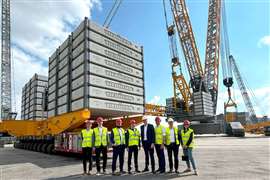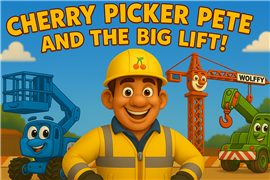Certified operation
30 April 2008
Under the OSHA Standards CFR 1910.178 and CFR 1926.602, operators of powered industrial trucks, including specialized powered industrial trucks, are required to be trained and certified.
To become a certified operator of powered industrial trucks, each employee must obtain the knowledge and skills required to understand the elements of safe operating procedures for lifting, lowering and moving loads, rated load capacities, personnel platform and lifting requirements, pre-operational check out, surface conditions, and hazardous environment conditions.
The standard requires that operator training and evaluations be conducted by a person who, by possession of a recognized degree, certificate, or professional standing, or who by knowledge, training and experience, has demonstrated the ability to train and evaluate the competence of a powered industrial truck operator.
Prior knowledge
The goal of the training should be to provide a training program based on the trainee's prior knowledge of the type of vehicles used and the hazards of the workplace. The forklift manufacturer's guidelines and manual must be reviewed and safety recommendations followed. Recommended course design includes video display, group discussion and hands-on practice.
The employee must also be familiar with the basic types and functions of a powered industrial truck and understand the data plate, safety ratings, forces that cause tip over, design considerations and the stability triangle. Additional training considerations include the selection of the appropriate truck, understanding the importance of pre-operational check out, and what to do if a problem is discovered.
As mentioned earlier, to become a certified operator, each employee must obtain the knowledge and skills to understand the elements of safe operating procedures for lifting, lowering and moving loads, rated load capacities, personnel platform and lifting requirements, pre-operational check out, surface conditions, and hazardous environment conditions. Training should also cover the properties of liquid propane gas, procedures for refueling trucks, safety issues related to service valves, surge valves, relieve valves, changing and charging batteries.
To include
In addition, training must include the following; a person should never stand or pass under the elevated portion of any truck, whether loaded or unloaded. No unauthorized person should ever be permitted to ride on a truck. When a truck is left unattended, it shall be fully lowered, controls neutralized, power shut of and brakes set. Wheels should be blocked if parked on an incline. Operators must keep a clear view of the travel path and never park within eight feet of the center of railroad tracks.
An operator shall also drive with the load upgrade when ascending or descending grades in excess of 10%. On all grades the load and load engaging means shall be tilted if applicable, and raised only as far as necessary to clear the road or work surface. Employees should also be educated in the difierences between operating a powered industrial truck and an automobile.
The employer is required to certify that the employee has received the training and evaluations necessary to operate the truck. The certification should consist of the operator's name, the dates of the training, the date of the evaluation, and the identity of the person conducting the training and evaluation.
Employers must conduct evaluations once every three years. In addition, refresher training shall be provided if the operator is either observed operating in an unsafe manner or has been involved in an accident or a near miss, the workplace changes, or the truck is a difierent type of equipment. The employer may rely on third party trainer's certification if the training entity presents to the employer verification that the training program conforms to the standard. Employers must keep records of their refresher training content and evaluations.
Trainees may operate a powered industrial truck only where such operation does not endanger the trainee or other employees, under the direct supervision of people who have the knowledge, training and experience to train operators and evaluate their competence.
Employees that are experienced and certified who have been trained to use a particular type of truck need not receive duplicate additional training if operating a truck with similar characteristics and placement of operating controls. Be sure to check the manufacturer's manual for additional training required.
OSHA enforcement
Employers not providing training on the operation instructions, warnings, or precautions in the manufacturer's manual related to seat belts may be cited by OSHA. Employers must require operators of powered industrial trucks with operator restraint devices, including seat belts, to use the devices. OSHA compliance ofi cers have received a directive to enforce the seat belt enforcement standard.
There are eleven designated types of powered industrial trucks and specialized powered industrial trucks (see table 1). These are types of lowlift and highlift trucks, guided Industrial vehicles, rough terrain forklift trucks, and operator-controlled industrial tow tractors.
STAY CONNECTED


Receive the information you need when you need it through our world-leading magazines, newsletters and daily briefings.
CONNECT WITH THE TEAM











